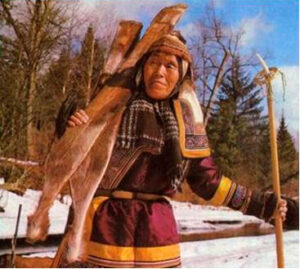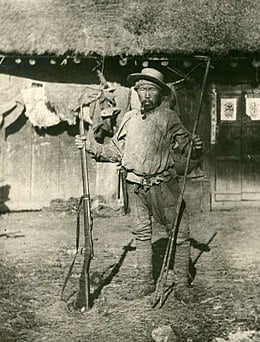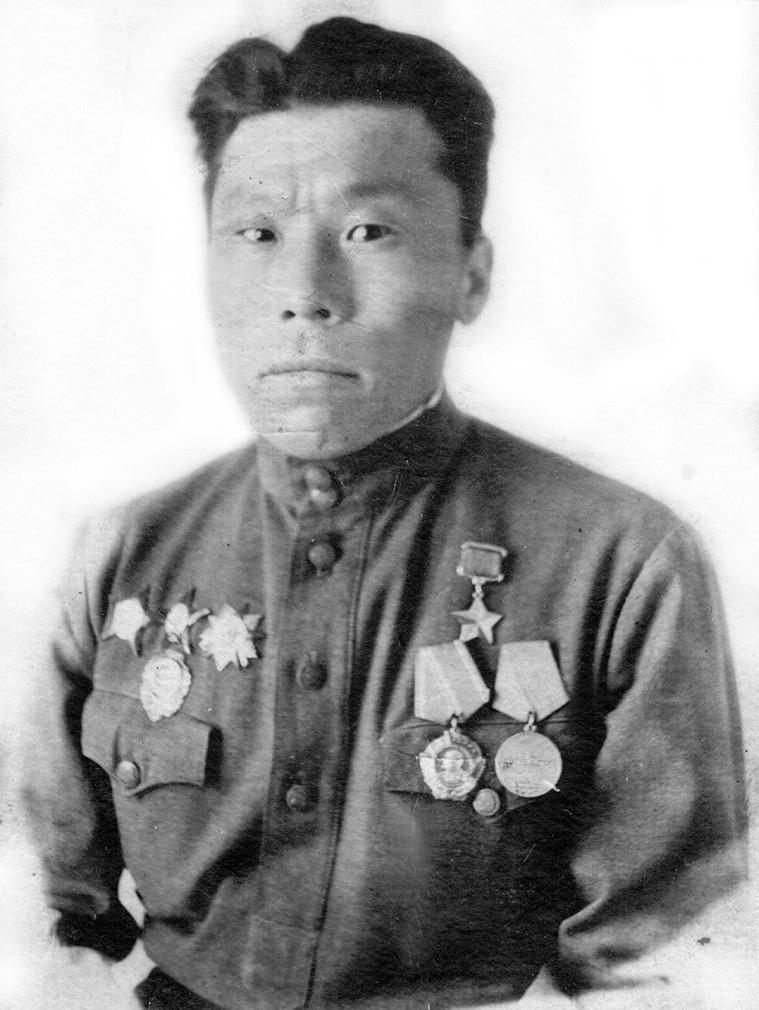
Basis of subsistence of the Nanai, as well as other peoples of the Lower Amur, was a trade, which included fishing, hunting, and gathering. The Nanai’ traditional farming was complex, but depending on the settlement, the importance of individual economic components was different. Thus, in the Amur villages, the leading field was the catch of salmon and sturgeon species. The Nanai living along the tributaries of the Amur river were mostly engaged in hunting, leaving for a fur-bearing animal hundreds of kilometers into the taiga.
Fishing was of utmost importance in the livelihoods of the Nanai. In the Nanai calendar, five months named after fish, indicating the importance of fishing. A characteristic feature of the Nanai fishery is the high specialization of fishing gear. Hook tackles were widely used, as were various types of stocks and nets. Of the trap tools, the most widespread was the trap of the ventilator type. Locking fishing is represented by several types of rides.
Hunting once played a much greater role in the life of the Nanai than in the 19th century. In numerous folklore works, the heroes are mainly engaged in hunting. Hunting is also reflected in the economic calendar of the Nanai. The importance of this industry is evidenced by the developed hunting terminology. The Nanai hunted both for fur-bearing animals and for meat production. Ungulates were hunted with the help of trapping pits and spotting, crossbows, and bears - with loops made of thick elk skin, as well as a guide's spear.
On the territory of the settlement of the Nanai people, Amur, in its upper reaches, flows among the flat lowlands and breaks up into channels between the islands. Below the mouth of the Hungari, such areas alternate with stretches, where the mountains drop off on the right bank directly to the river bed; here the Amur carries its waters in one powerful and wide (about 2 km) stream. Then, within the Udyl-Kizinskaya depression, the river again splits into channels. The Amur and its main tributaries (left - Tunguska with Urmi and Kur, Gorin, Limuri; right - Anyui, Hungari) serve as the most important transport artery of the region and at the same time are rich in fish resources, especially anadromous salmon (chum salmon and pink salmon), sturgeon, etc.
Зима здесь, несмотря на южное положение (48—51° с. ш., т. е. широта Харькова), суровая, с холодными ветрами и мощным снеговым покровом. Лето более теплое выше по Амуру, а на севере более прохладное. Быстрые и сильные, иногда опустошительные разливы рек бывают во второй половине лета и в начале осени (июль—сентябрь), в период муссонных дождей, когда выпадает главная масса годовых осадков.
The Amur valley in this area is bounded in the south by the uplands of the Sikhote Alin ridge, the slopes of which in places break off to the river bed, and are often separated from it by a wide valley lowland. On the left bank of the Amur, where the largest lake is located. Bolon-Ojal, the hills are almost everywhere remote from the Amur.
Растительность области пестрая и богатая в южной части, более однообразна в бассейне Горина, севернее его и в отдаленных от Амура горных районах. Во многих местах — среди низменностей, в горных падях с пологими склонами и т. д. — широко развиты мари — болота, открытые и с редкой криворослой лиственницей. В пойме Амура и по заливным его островам распространены ивовые (тальниковые) заросли и кочкарные вейниковые луга. Вообще вдоль рек, вплоть до среднего течения Горина, простираются приречные леса с густым и высоким травяным покровом — разнообразные, увитые лианами лиственные породы и кустарники (тополи, черемуха, ясень, амурская сирень, клены, жимолость, спирея и пр.). На горных склонах — смешанные леса из кедра, лиственницы, ели, пихты, желтой березы, осины, липы, кленов, дуба, сирени, орешника и т. д. В бассейне Горина встречается уже сосна, а севернее, в нижнем поясе гор, преобладают однообразные лиственничные леса. На высотах около 1400 м и выше развита альпийская растительность с кедровым орешником и лишайниковым покровом на каменистых участках.
The fauna is represented by Manchurian and Siberian forms. Squirrel, fox, otter, sable are widespread; up to the Gorin basin, there is a raccoon dog, hare, bear, wild boar, tiger, elk, musk deer. From birds - hazel grouse, black hazel grouse - grouse, black grouse, etc.
It was in this natural diversity that a traditional economy was formed, which was of a complex nature. Year-round fishing, combined with hunting, prevailed. Gathering was important. Mass fishing began with the spring opening of the rivers, when any (over 120 species) fish were caught. In August - September, fixed and flowing nets of various shapes, small seines (a large net with a sack) were placed on salmonids, and they were beaten with harpoons and prisoners (with a pitchfork tool). In the winter and summer, they erected stitches or ramps (hedges in the reservoir, often in the form of the letter "L", with a net trap). The period of salmon fishing for the family was the most intense: men caught fish, women cut it up, prepared for future use, children provided all possible help. Salmon was stocked in such quantity that it would last for a year. They prepared yukola, melted fish oil, collected skins, stored up all kinds of waste for feed for sled dogs and hunting dogs, which were kept up to ten per family.
Men hunted all year round elk, Manchurian elk, bear, wild boar and poultry. Fur animals were hunted in groups in winter, leaving for the taiga for 2-4 months. There are various ways and tools of hunting: with the help of a spear (guide), darts (sugbe); on the crust - with a spear and a bow (storms); during the rut, the ungulates were tempted with a decoy - a birch bark pipe; used trapping pits, hedges - notches, fences, crossbows (toygana) were placed on large animals, loops, nets on sables, and traps on other fur-bearing animals.
At the end of the XIX century. hunted with guns, but bows continued to be used. In the taiga, timber was harvested for construction and other needs, birch bark for utensils and boats, materials for weaving. They were engaged in the construction of dwellings and outbuildings, boats, bone processing, blacksmithing. They made spears, hooks, ruled knives, weaved nets and seines, and produced ginseng root for sale. The women collected wild plants, processed the skins and skins of animals and fish, sewed clothes, shoes, hats, weaved mats, baskets, and handbags. If necessary, they hunted and fished. In winter, when the men were not at home, they had to cut through the ice themselves, put shelters over the ice-hole, catch fish with bag-shaped nets or fishing rods.
They moved along the rivers on planks of heavy carrying capacity flat-bottomed boats with a sharp nose and blunt stern, as well as on pointed or spatulate-nosed dugout boats and birch bark boats (a local term). In winter - on skis-heads and fur-lined skis, as well as on Amur-type dog sleds, light, narrow, with runners bent on both sides. They sat astride them, putting their feet on small skis. The dogs were harnessed with a "snake" or "herringbone". Every family certainly had a hand sled, similar in shape to the traditional Amur sled. She was pulled by a team of two or three dogs. At the end of the XIX century. they borrowed from the Russians low, wide sledges with vertical and horizontal arcs and paired harnessed dogs. They were used to transport government cargo and mail. In the same period, they began to transport goods by horse.





